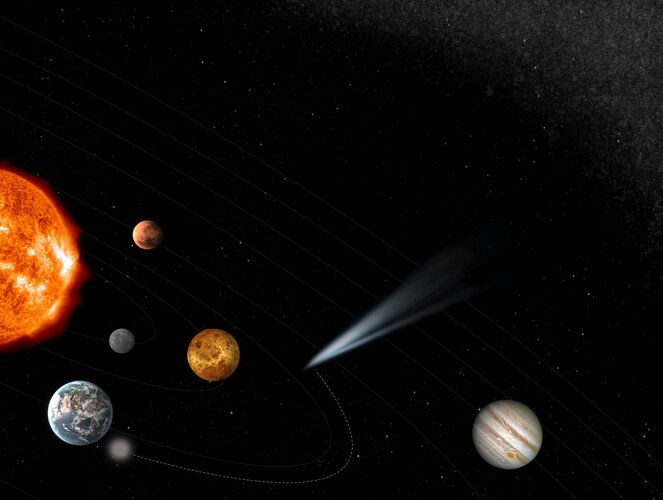
ESA is leading the development of the main spacecraft and one of the probes, both carrying different but complementary instruments built by European scientific institutes and industry. JAXA, the Japan Aerospace Exploration Agency, is providing the other probe and its instruments.
“Comet Interceptor is an ambitious mission that requires a unique spacecraft – three novel spacecraft in fact – and after an intensive study and planning phase we are ready to start building the European elements,” says Nicola Rando, ESA’s Comet Interceptor project manager.
“European scientists, engineers and flight operators are set to strengthen their positions as leaders in all aspects of cometary exploration as we take this important step in building ESA’s next iconic comet mission,” says ESA Director of Science Günther Hasinger.
The signing of the contract was celebrated between ESA and OHB with a small ceremony at ESA Headquarters in Paris on 15 December.
Comet Interceptor was proposed to ESA in July 2018 and selected in June 2019. It is an example of a ‘fast’ development or F-class mission. Comet Interceptor is foreseen for launch as co-passenger with ESA’s exoplanet-studying Ariel spacecraft in 2029.



